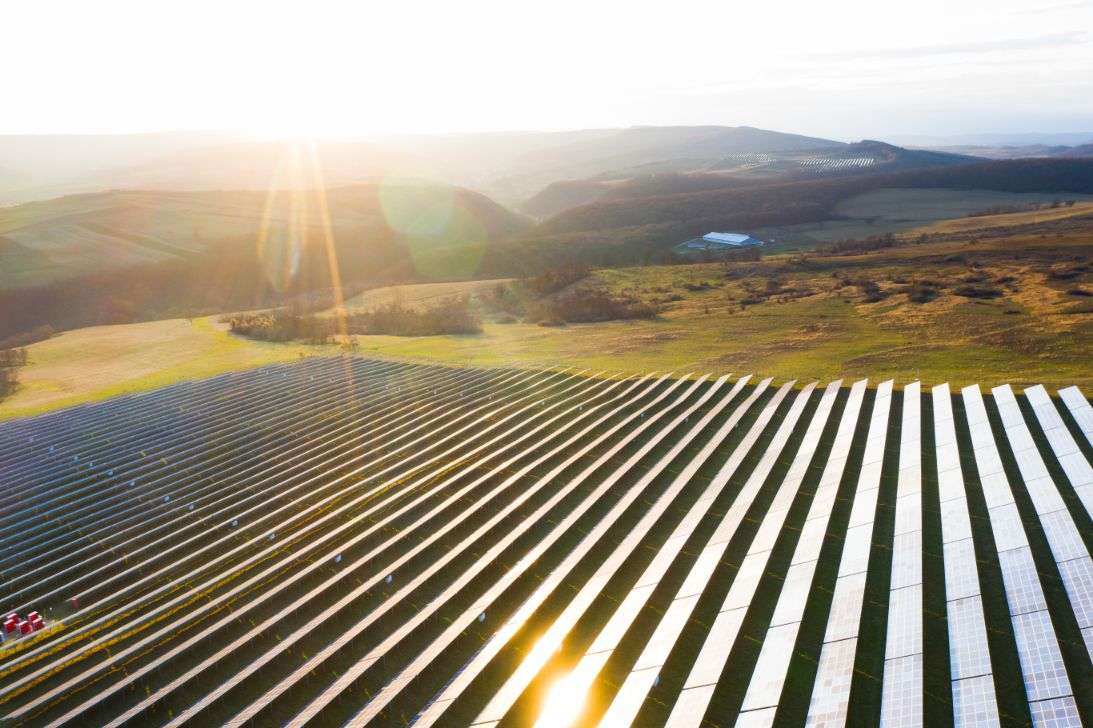The sun, a colossal ball of hot, glowing gases, has been the ultimate source of energy that powers life on Earth. However, it is only in recent decades that we have started to harness this abundant energy source directly to generate electricity. Solar energy is rapidly becoming a vital part of the global energy mix, promising a cleaner, more sustainable future. This form of energy has remarkable advantages, and its potential is only beginning to be realized. From its environmental impact to its economic benefits, here are the top ten facts about solar energy. Some interesting facts about solar energy:
- Renewable Source: Solar energy is a renewable source of energy, which means it’s not going to run out anytime soon. As long as we have the sun, we have an abundant source of energy.
- Environmentally Friendly: Solar energy production generates clean, green, emission-free energy. It’s a great way to reduce your carbon footprint.
- Solar Photovoltaics and Concentrated Solar Power: The two main ways to generate electricity from the sun are photovoltaics and concentrated solar power. Photovoltaics generate electricity directly from sunlight, whereas concentrated solar power generates electricity from the heat of the sun’s rays.
- Solar Energy is the Most Abundant Energy Source on Earth: More solar energy hits the Earth in one hour than the entire world uses in a year. However, we’re currently able to harness just a fraction of this energy.
- Decreasing Costs: The cost of solar panels has dropped dramatically over the past decades, making it an increasingly affordable option for individuals and businesses. According to a 2020 report by the International Energy Agency (IEA), solar power is now the cheapest source of electricity in history.
- Improving Efficiency: Solar panel efficiency keeps improving, meaning that modern panels can convert more of the sun’s energy into electricity than older models. The most efficient solar panels commercially available had efficiencies of around 22-23%.
- Off-grid Power Source: Solar energy can be used as an off-grid solution, making it invaluable in remote locations where traditional electricity can be expensive or impossible to generate. It’s also useful for powering devices like water heaters, cars, and even spacecraft.
- Energy Independence and Security: Harnessing solar power can contribute to energy independence for countries, reducing reliance on foreign oil and fossil fuels. This, in turn, can contribute to national security.
- Job Creation: The solar industry creates jobs at a much higher rate than the overall U.S. economy. This growth is expected to continue as the adoption of solar power increases.
- Solar Energy Storage: One of the biggest challenges of solar energy is the issue of storing it for use when the sun isn’t shining. However, advancements in battery technology are making solar-plus-storage systems more viable. This is expected to be a major focus of development in the energy sector in the coming years.
Renewable Source
 Unlike fossil fuels such as coal, oil, and natural gas, which are finite resources, solar energy is inexhaustible. The energy produced by the sun can be harnessed and converted into electricity or heat, providing a reliable and sustainable energy source.
Unlike fossil fuels such as coal, oil, and natural gas, which are finite resources, solar energy is inexhaustible. The energy produced by the sun can be harnessed and converted into electricity or heat, providing a reliable and sustainable energy source.
By definition, renewable energy is derived from natural processes that are replenished at a rate that is equal to or faster than the rate at which they are consumed. Solar energy fits this description perfectly because the sun is expected to continue its natural fusion processes for billions of years. Therefore, from a human timeframe, solar energy is considered limitless.
By utilizing solar power, we not only reduce our dependence on non-renewable energy sources but also contribute to the mitigation of greenhouse gas emissions, thus making our energy consumption patterns more sustainable. As solar technology continues to evolve and become more efficient, it is expected to play an increasingly significant role in the global energy mix.
Environmentally Friendly
 Solar energy is indeed one of the most environmentally friendly energy sources. It has a significantly lower environmental impact compared to conventional energy technologies.
Solar energy is indeed one of the most environmentally friendly energy sources. It has a significantly lower environmental impact compared to conventional energy technologies.
Unlike fossil fuels, which release greenhouse gases, carcinogens, and carbon dioxide when burned, solar energy is clean. It does not emit harmful pollutants during operation. This is one of the main reasons why transitioning to renewable sources like solar energy is essential in combating climate change and air pollution.
Moreover, solar energy can be harnessed locally, reducing the need for extensive energy transportation and the associated environmental costs and potential for spills or accidents. It’s a decentralized form of energy production that contributes to energy security and reduces dependence on foreign oil.
Solar panels have their environmental costs, too, mainly in the production and end-of-life stages. However, with advances in technology, recycling processes, and a lifespan of 25-30 years or more for solar panels, the overall environmental footprint remains much lower than that of traditional energy sources.
By choosing to power your home or business with solar energy, you’re actively reducing your carbon footprint, helping to protect the environment for future generations.
Solar Photovoltaics and Concentrated Solar Power
Solar Photovoltaics (PV) and Concentrated Solar Power (CSP) are the two primary technologies used to harness energy from the sun:
Solar Photovoltaics (PV):
This technology converts sunlight directly into electricity using a semiconductor material, typically silicon-based. When photons of light strike the semiconductor, they excite the electrons, creating an electric current. The resulting electricity can be used immediately or stored in batteries for later use. PV systems can be installed at various scales, from small rooftop systems to large solar power stations.
Concentrated Solar Power (CSP):
In contrast to photovoltaics, CSP systems generate electricity by using the heat from the sun’s rays. They use mirrors or lenses to focus a large area of sunlight onto a small area. The concentrated light is converted to heat, which drives a heat engine (usually a steam turbine) connected to an electrical power generator. CSP is typically used in large power plants and can store energy as heat before it’s converted into electricity, allowing for power generation even when the sun is not shining.
Both technologies have their advantages and applications. PV is more versatile and can be used in both small-scale and utility-scale installations, while CSP, due to its scalability and storage capability, is particularly suited for large-scale, utility-sized power plants. Both play a critical role in the transition towards a more sustainable and renewable energy future.
Solar Photovoltaics
Solar Photovoltaics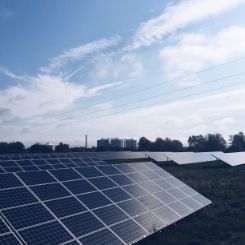 (PV) is indeed one of the primary ways we harness energy from the sun and convert it into electrical power. The process involves a few key steps:
(PV) is indeed one of the primary ways we harness energy from the sun and convert it into electrical power. The process involves a few key steps:
Absorption:
When sunlight hits the solar panel, the solar cells within the panel (made from semiconductor material, typically silicon) absorb the photons in the sunlight.
Excitation:
The absorbed photons have enough energy to excite electrons in the semiconductor, knocking them free from their atoms. This process creates electron-hole pairs in the material.
Separation:
Due to the structure of the solar cell and the electric field within the semiconductor, these electron-hole pairs are separated, causing the electrons to move to one side of the cell.
Collection:
The movement of these electrons creates an electric current, which is collected by thin metal fingers on the top of the cell and transferred to the bottom via a metal back sheet. This current can be drawn off to be used immediately or stored in a battery for later use.
Solar PV systems can vary greatly in size, from small rooftop installations on homes or businesses to large utility-scale solar farms. Regardless of their size, the basic process of converting sunlight into electricity remains the same. This technology allows for the harnessing of the sun’s energy in a direct, efficient manner, making it a key player in our global shift towards renewable energy sources.
Concentrated Solar Power
Concentrated Solar Power (CSP), also known as solar thermal power, is another technology that uses the sun’s energy to generate electricity, but in a fundamentally different way than photovoltaics. Here’s how it works:
(CSP), also known as solar thermal power, is another technology that uses the sun’s energy to generate electricity, but in a fundamentally different way than photovoltaics. Here’s how it works:
Concentration:
The first step in a CSP system is to concentrate sunlight onto a small area. This is done using mirrors or lenses. The concentrated sunlight can be as much as 1,000 times the intensity of regular sunlight, depending on the design of the system.
Absorption and Heat Generation:
The concentrated sunlight is directed onto a receiver, which absorbs the sunlight and converts it into heat. This receiver is typically a pipe filled with a fluid (often a type of oil or molten salt) that can absorb a high amount of heat.
Heat Conversion:
The heated fluid is then used to generate steam, which drives a turbine connected to an electricity generator, much like in traditional power plants.
Energy Storage:
One of the major advantages of CSP over photovoltaics is that the heat generated can be stored relatively easily. This means that CSP plants can continue to generate electricity even when the sun isn’t shining, by releasing the stored heat to drive the turbine.
CSP is typically used in large power plants, as the technology needs a large amount of direct sunlight to work effectively, making it well-suited to desert areas. The ability to store energy as heat and generate electricity on demand is a significant advantage of CSP and makes it an important part of the renewable energy mix. As with all technologies, ongoing research and development aim to further increase the efficiency and decrease the costs of CSP, which will help to expand its use in the future.
Solar Energy is the Most Abundant Energy Source on Earth
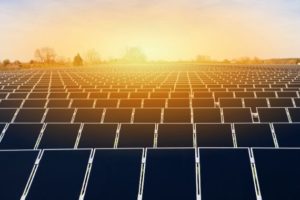 The amount of solar energy that reaches the Earth’s surface is truly immense. To put it into perspective, the amount of solar energy that hits the Earth every hour is enough to meet the entire planet’s energy needs for a whole year. This statement is based on the fact that the sun radiates approximately 174 Petawatts (Pw) of solar energy every day, with about 30% reflected in space and the rest absorbed by oceans, clouds, and land masses.
The amount of solar energy that reaches the Earth’s surface is truly immense. To put it into perspective, the amount of solar energy that hits the Earth every hour is enough to meet the entire planet’s energy needs for a whole year. This statement is based on the fact that the sun radiates approximately 174 Petawatts (Pw) of solar energy every day, with about 30% reflected in space and the rest absorbed by oceans, clouds, and land masses.
Currently, only a small fraction of this potential power is being tapped. The International Energy Agency (IEA) reported that in 2019, solar power accounted for about 3% of the world’s total electricity generation, showing that there’s still enormous untapped potential.
The limitations to harnessing more of this energy are multifaceted, involving technological, economic, and policy challenges. Improving the efficiency of solar panels, decreasing costs, and overcoming grid integration and storage issues are among the ongoing pursuits in the field.
Despite these challenges, solar power is one of the fastest-growing energy sectors due to its incredible potential and the urgency of transitioning to clean energy sources. With continued advancements in solar technologies and energy storage, we can expect to harness an increasingly larger share of this abundant energy source in the future.
Decreasing Costs
 The cost of solar energy has seen a dramatic decline over the years, making it more accessible to a broader audience. Factors contributing to this cost reduction include advancements in technology, economies of scale in manufacturing, increased market competition, and policy support.
The cost of solar energy has seen a dramatic decline over the years, making it more accessible to a broader audience. Factors contributing to this cost reduction include advancements in technology, economies of scale in manufacturing, increased market competition, and policy support.
The price drop in solar energy technologies has been extraordinary. For instance, the cost of photovoltaic modules (solar panels) has fallen by around 90% since the end of 2009, according to the International Renewable Energy Agency (IRENA). This trend has made solar energy increasingly competitive with traditional energy sources in many parts of the world, even without financial incentives.
According to the International Energy Agency’s World Energy Outlook 2020, solar photovoltaics are now consistently cheaper than new coal- or gas-fired power plants in most countries, and solar projects now offer some of the lowest-cost electricity ever seen. This is a transformative development for the global energy landscape and the accessibility of clean power.
This trend of decreasing costs is likely to continue as new technologies and materials become available, and as production and installation processes become more efficient. As solar power becomes increasingly cost-effective, it is expected to play a larger role in global electricity generation, driving the transition toward sustainable energy.
Improving Efficiency
 The efficiency of solar panels — that is, their ability to convert sunlight into usable electricity — has been steadily improving thanks to ongoing research and technological advancements.
The efficiency of solar panels — that is, their ability to convert sunlight into usable electricity — has been steadily improving thanks to ongoing research and technological advancements.
The most efficient commercially available solar panels were indeed reaching efficiencies of around 22-23%. These are usually monocrystalline solar panels, which are made from a single crystal structure, allowing the electrons more room to move and thus providing higher efficiency.
It’s worth noting that while higher efficiency is generally better as it means more electricity can be generated from the same amount of sunlight, it’s not the only factor to consider when choosing a solar panel. Other factors such as cost, space availability, and specific energy needs should also be taken into account.
Research into new technologies and materials, such as perovskite solar cells and tandem solar cells that combine different materials, suggests that we could see even more efficient solar panels in the future. While these technologies were still in the early stages of development as of 2021, they have the potential to significantly increase solar panel efficiency in the coming years. This will be a crucial factor in making solar power an even more competitive and prevalent energy source.
Off-grid Power Source
 One of the great advantages of solar energy is its ability to provide power in remote locations, where the cost of installing traditional power lines is too high or impractical. This feature has made solar energy a crucial part of solutions for increasing energy access in developing countries or remote areas.
One of the great advantages of solar energy is its ability to provide power in remote locations, where the cost of installing traditional power lines is too high or impractical. This feature has made solar energy a crucial part of solutions for increasing energy access in developing countries or remote areas.
In off-grid solar systems, the electricity generated by the solar panels is typically stored in batteries for use when the sun isn’t shining. These systems can provide a reliable source of electricity for homes, schools, clinics, and businesses that are located far from the main power grid.
Solar energy can also be used to power a wide range of devices and vehicles. For example, solar water heaters use the sun’s energy to heat water, reducing the need for gas or electricity. Solar-powered cars are also being developed, and while they’re not yet common, they could become more so in the future as technology improves.
In the realm of space exploration, solar power is critical. Many spacecraft, including the International Space Station, rely on solar panels to generate electricity. Mars rovers, like Opportunity and the more recent Perseverance, use solar panels to power their exploration of the Red Planet.
By offering a flexible, modular, and decentralized form of energy, solar power brings a wide range of benefits and opens up many possibilities for sustainable development and technological innovation.
Energy Independence and Security
Energy independence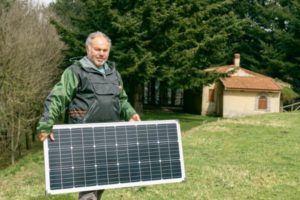 — the ability of a nation to meet its energy needs using domestic resources — is a significant strategic goal for many countries. Solar energy plays a pivotal role in achieving this objective.
— the ability of a nation to meet its energy needs using domestic resources — is a significant strategic goal for many countries. Solar energy plays a pivotal role in achieving this objective.
As a domestic resource, solar power reduces a country’s dependence on imported energy sources, which can be subject to price volatility, supply interruptions, and geopolitical tensions. By investing in solar energy infrastructure, countries can produce their energy locally, providing a level of energy security and predictability.
Moreover, by reducing dependence on fossil fuels, countries can also insulate their economies from oil and gas price shocks that can lead to economic instability. The shift towards solar energy also helps to diversify a country’s energy mix, further increasing its resilience.
Another aspect of energy security is the robustness of the energy infrastructure itself. Traditional power grids can be vulnerable to disruption, whether from natural disasters or malicious actions. Solar power systems, particularly when combined with energy storage, can provide a decentralized energy network, reducing these vulnerabilities and enhancing energy resilience.
In the context of climate change, energy independence through renewables like solar also means moving towards a low-carbon economy, which is a crucial step for nations to meet their environmental and sustainability commitments. In this sense, energy security and environmental protection go hand in hand.
Job Creation
 The solar industry has been a significant source of job creation, outpacing many other sectors of the economy. These jobs span a range of skill levels and fields, including manufacturing, installation, operations, maintenance, sales, and research and development.
The solar industry has been a significant source of job creation, outpacing many other sectors of the economy. These jobs span a range of skill levels and fields, including manufacturing, installation, operations, maintenance, sales, and research and development.
According to a report by the Solar Foundation, the solar industry in the United States employed about 231,000 people in 2020, marking a significant increase over the previous decade. This trend of job growth is expected to continue as the demand for clean, renewable energy increases, and as policy support for the solar industry strengthens.
Moreover, the growth of solar power isn’t just creating jobs in the energy sector. It’s also stimulating economic growth more broadly by reducing energy costs for businesses and consumers, increasing energy independence, and driving innovation in related industries, such as energy storage and electric vehicles.
The increasing adoption of solar energy is thus not just good for the environment—it’s also beneficial for the economy. As countries around the world aim to combat climate change and transition to a low-carbon future, the solar industry will likely continue to be a significant source of job creation and economic growth.
Solar Energy Storage
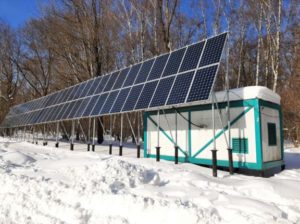 While solar energy provides an abundant and renewable source of power, its intermittent nature has been a challenge. Since solar panels only produce electricity when the sun is shining, storing this energy for use during nighttime or cloudy periods is essential for maximizing its utility.
While solar energy provides an abundant and renewable source of power, its intermittent nature has been a challenge. Since solar panels only produce electricity when the sun is shining, storing this energy for use during nighttime or cloudy periods is essential for maximizing its utility.
Traditionally, the variability of solar power has been managed by balancing it with other forms of energy generation on the grid, such as gas or hydropower. However, with advancements in battery technology, it’s becoming increasingly feasible to store solar energy for later use. This has been made largely possible due to the rapid decline in the cost and the increase in the performance of energy storage technologies, particularly lithium-ion batteries.
Solar-plus-storage systems, where solar panels are paired with onsite energy storage, offer numerous benefits. They can provide power during outages, reduce dependence on the grid, and even supply power back to the grid when demand is high. They also help smooth out the supply of solar power, making it a more reliable energy source.
Energy storage is widely recognized as a key component of the future of renewable energy, enabling higher levels of solar and wind power on the grid. Beyond batteries, other storage technologies such as pumped hydro, thermal storage, and hydrogen are also being explored. Continued innovation and investment in this area will be critical to fully unlocking the potential of solar energy.
Solar energy represents a compelling solution for many of the world’s most pressing problems. Its abundance, decreasing costs, environmental friendliness, and ability to drive energy independence mark it as a cornerstone for the future of sustainable energy. However, like any significant shift, it comes with its challenges, such as storage and efficiency, which will continue to be the focus of research and development. Despite these hurdles, the prospect of a solar-powered future remains bright. The sun has always been our planet’s primary energy source; now, we are finally learning how to use it directly and efficiently.

